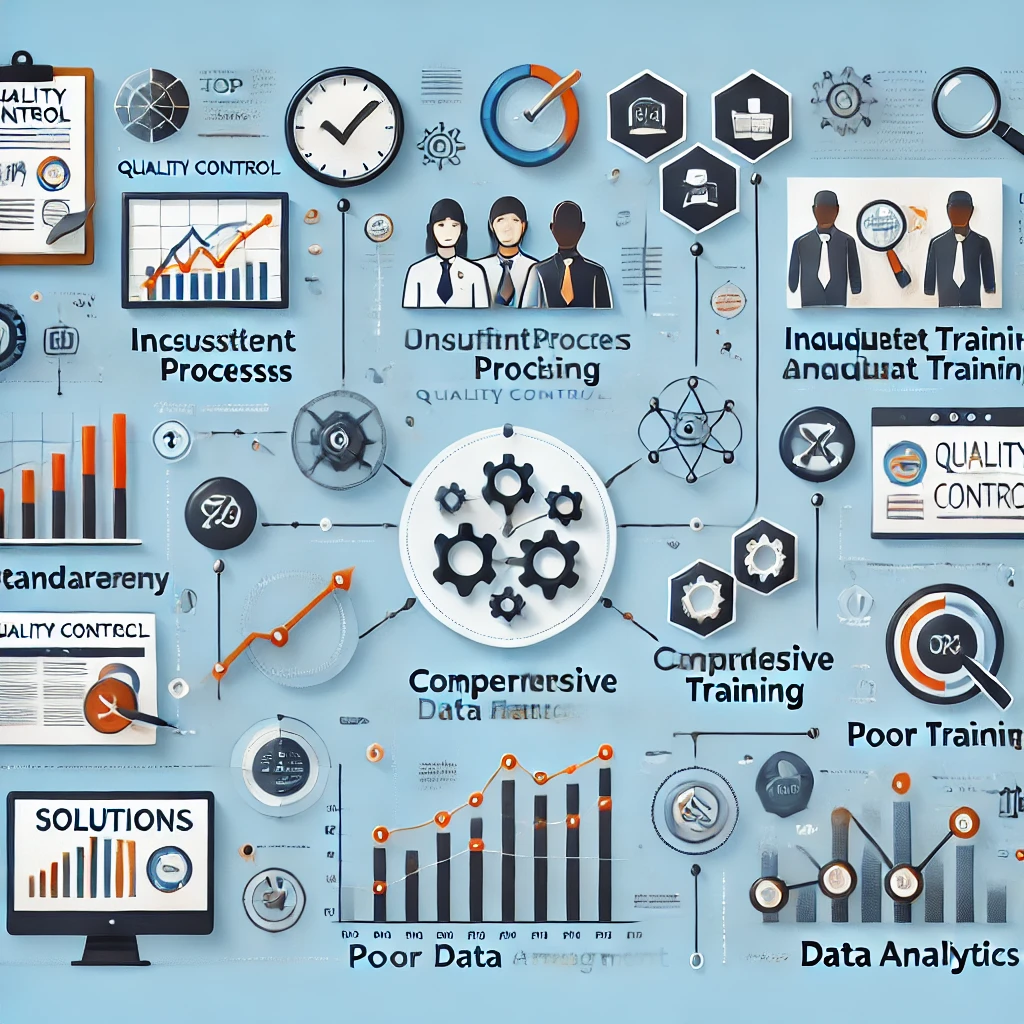Quality control is a critical aspect of any manufacturing or production process. Ensuring that products meet the required standards is essential for maintaining customer satisfaction, reducing costs, and complying with regulatory requirements. However, quality control management faces numerous challenges that can impede these objectives. This blog will explore the top challenges in Quality Control and provide practical solutions for addressing them.
1. Inadequate Quality Control Training
1.1 Importance of Quality Control Training
Quality control training is vital for equipping employees with the necessary skills and knowledge to perform their tasks effectively. Without proper training, staff may lack the competency to identify defects, use testing equipment, or follow quality control procedures.
1.2 Addressing the Training Gap
To address this challenge, organizations should invest in comprehensive Quality Control Training programs. These programs should cover the basics of quality control and assurance, the use of relevant tools, and the importance of maintaining high standards. Regular refresher courses and assessments can also ensure that employees stay updated on best practices.
2. Inconsistent Quality Control and Assurance Processes
2.1 Standardizing Quality Control Procedures
Inconsistencies in quality control and assurance processes can lead to variability in product quality. This can be due to differing interpretations of quality standards or varying levels of rigor in inspections.
2.2 Implementing Standard Operating Procedures
To overcome this challenge, companies should develop and enforce standardized operating procedures (SOPs) for quality control. SOPs provide clear guidelines on how to perform inspections, record results, and take corrective actions. Consistency in these processes ensures that all products are subject to the same level of scrutiny.
3. Inefficient Quality Control Management Systems
3.1 Challenges with Manual Systems
Manual quality control management systems can be time-consuming and prone to errors. They often involve a lot of paperwork, which can be difficult to manage and retrieve when needed.
3.2 Leveraging Technology for Quality Control Management
Implementing automated quality control management systems can streamline the process and reduce the likelihood of errors. These systems can track and analyze data in real-time, providing insights into potential issues before they become significant problems. They also facilitate easier access to historical data for audits and continuous improvement initiatives.
4. Lack of Real-Time Quality Control Data
4.1 Importance of Real-Time Data
Having access to real-time quality control data is crucial for making timely decisions and preventing defects from reaching the customer. Delayed data can result in continued production of faulty products, leading to increased costs and customer dissatisfaction.
4.2 Implementing Real-Time Monitoring Solutions
To address this issue, companies should implement real-time monitoring solutions that collect and analyze data as products move through the production line. This enables immediate detection of deviations from quality standards and allows for quick corrective actions.
5. Addressing Supplier Quality Control
5.1 Challenges with Supplier Quality Control
Quality control management extends beyond internal processes to include supplier quality control. Ensuring that suppliers adhere to quality standards is critical for maintaining the overall quality of the final product.
5.2 Supplier Quality Control Management Strategies
Companies should implement robust supplier quality control management strategies. This includes conducting regular supplier audits, establishing clear quality expectations, and fostering open communication with suppliers. Additionally, integrating supplier quality data into the company’s Quality Management System can provide a comprehensive view of the entire supply chain’s quality performance.
6. Ensuring Compliance with Regulatory Standards
6.1 Navigating Complex Regulations
Complying with regulatory standards is a significant challenge in Quality Control and Assurance. Regulations can vary widely across different regions and industries, and non-compliance can result in severe penalties.
6.2 Staying Updated with Regulatory Changes
Organizations must stay updated with changes in regulations and ensure that their quality control processes align with these requirements. Implementing a robust compliance management system can help track regulatory updates and ensure that all aspects of quality control adhere to the necessary standards.
7. Managing Customer Complaints and Feedback
7.1 Importance of Customer Feedback
Customer complaints and feedback are valuable sources of information for identifying areas of improvement in quality control. However, managing and analyzing this data can be challenging.
7.2 Integrating Customer Feedback into Quality Control
Companies should establish a systematic process for capturing and analyzing customer complaints and feedback. This information should be integrated into the quality control management system to identify trends, address recurring issues, and implement preventive measures.
8. Continuous Improvement in Quality Control
8.1 The Need for Continuous Improvement
Quality control is an ongoing activity rather than a one-time event. To maintain high standards, organizations must continuously seek ways to improve their quality control processes.
8.2 Implementing Continuous Improvement Programs
Adopting continuous improvement programs, such as Six Sigma or Lean Manufacturing, can help identify inefficiencies and implement effective solutions. These programs involve regular review of quality control data, employee training, and fostering a culture of quality within the organization.
Conclusion
In 2024, the challenges in quality control and assurance are more complex than ever. ComplianceQuest quality control offers a comprehensive solution to these challenges by integrating advanced quality control management features, real-time data monitoring, and compliance tracking into one platform. With ComplianceQuest, organizations can ensure consistent quality standards, streamline their processes, and maintain compliance with regulatory requirements. Investing in such a robust quality control management system is essential for staying competitive and meeting the high expectations of customers and regulators alike.
By addressing the top challenges in quality control and leveraging advanced technology, companies can enhance their quality control and assurance processes, leading to better product quality, increased customer satisfaction, and overall business success.
